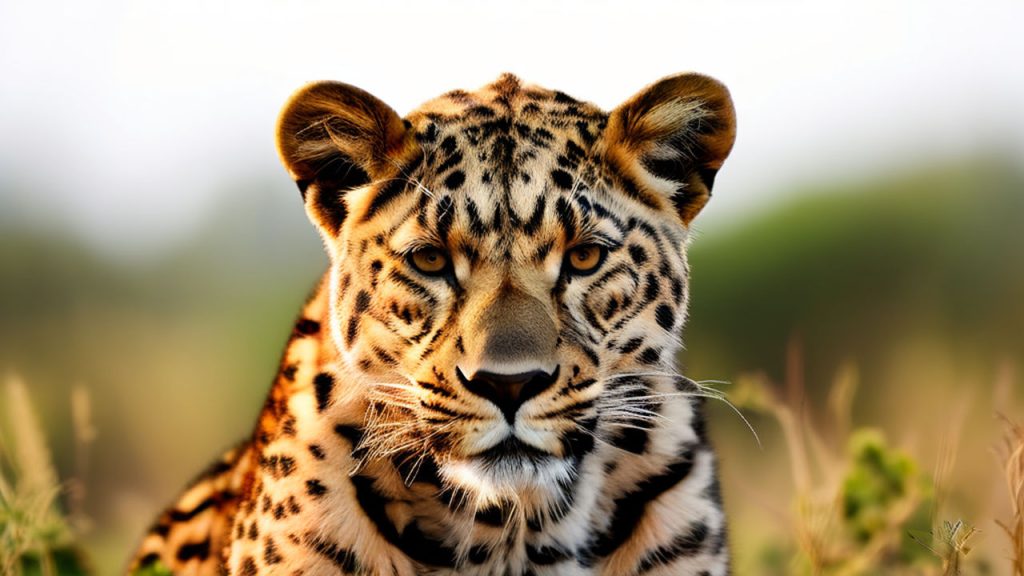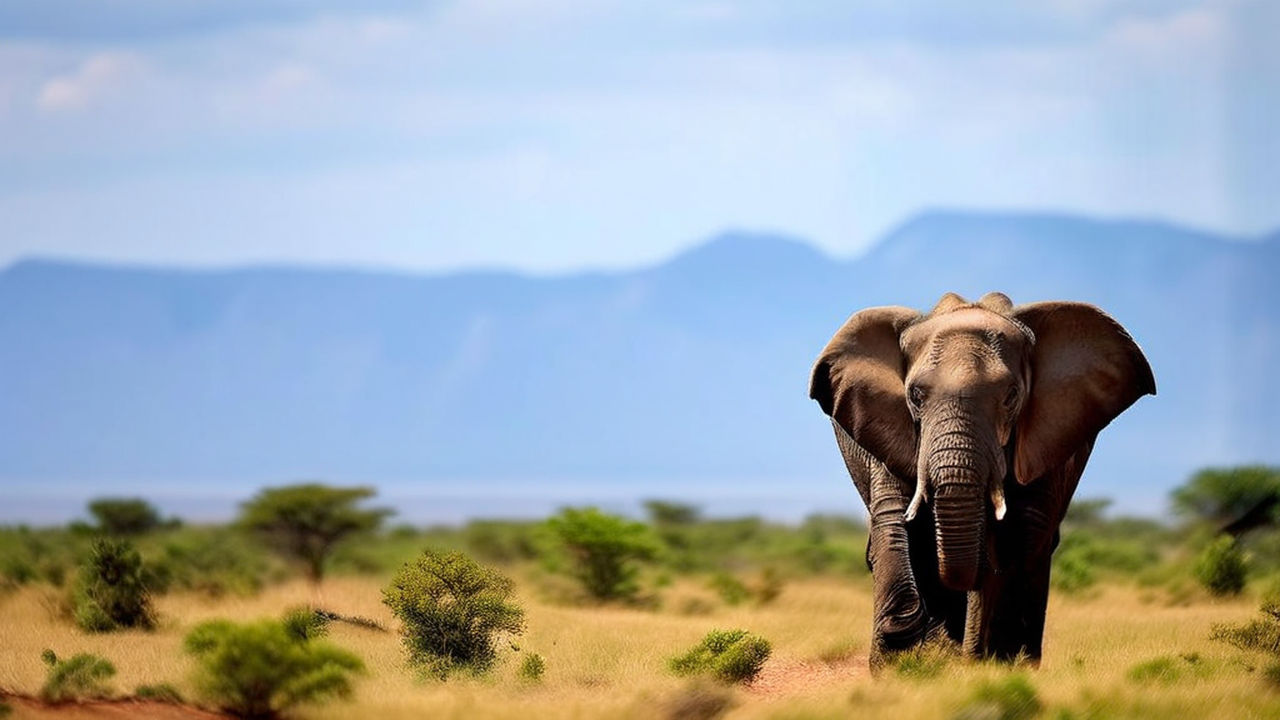Introduction
Understanding the plight of endangered species is crucial in today’s world. As human activity continues to encroach upon natural habitats, the survival of numerous species hangs in the balance. This article delves into the significance of biodiversity and the urgent need to address the escalating crisis facing endangered animals.
Understanding Endangered Species
Endangered species are those facing the risk of extinction in the near future. Factors such as habitat destruction, climate change, and illegal poaching contribute to their declining populations. Understanding the unique challenges faced by each endangered species is vital in formulating effective conservation strategies.
Importance of Biodiversity
Biodiversity refers to the variety of life on Earth, encompassing all living organisms and ecosystems. It plays a crucial role in maintaining ecological balance and stability. Endangered species are integral components of this intricate web of life, and their loss can have far-reaching consequences on the health of ecosystems and human well-being.
The Current Crisis
The world is facing a pressing global extinction crisis, with countless species teetering on the brink of oblivion. This crisis, driven primarily by human activity, poses a grave threat to the planet’s biodiversity and ecological stability.
Global Extinction Crisis
The global extinction crisis refers to the alarming rate at which species are disappearing from the face of the Earth. Scientists estimate that the current rate of species extinction is up to 1,000 times higher than the natural background rate. This unprecedented loss of biodiversity is unparalleled in human history and is attributed to various human-induced factors.
Impact of Human Activity
Human activity lies at the heart of the extinction crisis. Activities such as deforestation, habitat destruction, pollution, climate change, and illegal wildlife trade have wreaked havoc on ecosystems worldwide. These actions disrupt delicate ecological balances, pushing many species towards extinction.
The Current Crisis
The world is facing a pressing global extinction crisis, with countless species teetering on the brink of oblivion. This crisis, driven primarily by human activity, poses a grave threat to the planet’s biodiversity and ecological stability.
Loss of Habitat
The loss of habitat stands as one of the most significant threats to endangered animals worldwide. Human activities such as deforestation and urbanization have resulted in the destruction and fragmentation of natural habitats, leaving many species with dwindling areas in which to thrive.
Deforestation
Deforestation, the clearing of forests for agriculture, logging, and development, is a major contributor to habitat loss. Vast expanses of forests, home to countless plant and animal species, are being razed at an alarming rate. This destruction not only directly displaces wildlife but also disrupts intricate ecological relationships, leading to cascading effects throughout entire ecosystems.
Urbanization
Urbanization, the expansion of cities and human settlements, further encroaches upon wildlife habitats. As urban areas expand, natural landscapes are transformed into concrete jungles, leaving little room for native flora and fauna. Fragmented habitats and increased human-wildlife conflicts exacerbate the challenges faced by endangered species, pushing them closer to extinction.
The Current Crisis
The world is facing a pressing global extinction crisis, with countless species teetering on the brink of oblivion. This crisis, driven primarily by human activity, poses a grave threat to the planet’s biodiversity and ecological stability.
Poaching and Illegal Wildlife Trade
Poaching and illegal wildlife trade represent significant threats to endangered animals across the globe. The demand for animal products, such as ivory, rhino horn, and exotic pets, fuels a lucrative black market trade that pushes many species to the brink of extinction.
Threat to Iconic Species
Iconic species such as elephants, rhinoceroses, and tigers are particularly vulnerable to poaching. These majestic creatures, once abundant in the wild, now face relentless pressure from poachers seeking to profit from their body parts and skins. The relentless slaughter of these iconic animals not only threatens their survival but also robs future generations of the chance to witness them in their natural habitats.
Impact on Ecosystems
The impact of poaching and illegal wildlife trade extends beyond individual species to entire ecosystems. Many endangered animals play crucial roles in maintaining ecological balance, from regulating prey populations to dispersing seeds. The loss of these species can have cascading effects, leading to imbalances that destabilize entire ecosystems and jeopardize the survival of other species.
Endangered Animals Around the World
Endangered animals are found across the globe, facing threats to their survival in various ecosystems. From the depths of the ocean to the dense rainforests and vast savannahs, these species are struggling to cope with the challenges imposed by human activity.
List of Endangered Species
- Tigers: Once widespread across Asia, tiger populations have plummeted due to habitat loss and poaching.
- Elephants: Targeted for their ivory tusks, elephants are under constant threat from illegal poaching and habitat destruction.
- Rhinoceroses: Poached for their horns, rhinoceros populations are dwindling rapidly, particularly in Africa and Asia.
- Pangolins: The most trafficked mammal in the world, pangolins are hunted for their scales and meat.
- Vaquita: With only a few dozen individuals left, the vaquita is the world’s most endangered marine mammal.
- Kakapo: A flightless parrot endemic to New Zealand, the kakapo faces threats from introduced predators and habitat loss.
Geographic Hotspots
Certain regions of the world are biodiversity hotspots, home to a disproportionate number of endangered species. These areas are characterized by high levels of species richness and endemism, making them critical for conservation efforts.
- Amazon Rainforest: The Amazon basin harbors a staggering array of plant and animal species, many of which are found nowhere else on Earth. Deforestation poses a significant threat to the region’s biodiversity.
- Coral Reefs: Coral reefs are biodiversity hotspots teeming with life, from colorful fish to intricate coral formations. Climate change, pollution, and overfishing threaten these delicate ecosystems.
- Southeast Asia: The forests of Southeast Asia are rich in biodiversity but are rapidly disappearing due to logging, agriculture, and urbanization. Species such as orangutans and tigers are among those most at risk.
Iconic Endangered Species
Tigers
Tigers, known for their majestic beauty and strength, are among the most iconic and endangered species on the planet. Once found throughout Asia, tiger populations have plummeted due to habitat loss, poaching, and human-wildlife conflict. With fewer than 4,000 individuals remaining in the wild, urgent conservation efforts are needed to save these magnificent big cats from extinction.
Elephants
Elephants, revered for their intelligence and social complexity, face numerous threats to their survival. Poaching for ivory, habitat destruction, and human encroachment into their natural habitats have decimated elephant populations across Africa and Asia. With fewer than 415,000 elephants left in the wild, concerted conservation efforts are essential to protect these gentle giants for future generations.
Rhinoceroses
Rhinoceroses, with their prehistoric appearance and distinctive horns, are critically endangered due to relentless poaching for their horns. Despite international efforts to curb the illegal wildlife trade, rhino populations continue to decline rapidly, with fewer than 30,000 individuals remaining in the wild. Strict law enforcement and community engagement are crucial in safeguarding these iconic herbivores from extinction.
Lesser-Known Endangered Species
Pangolins
Pangolins, often referred to as “scaly anteaters,” are elusive creatures that inhabit forests and grasslands across Asia and Africa. Despite their low profile, pangolins are the world’s most trafficked mammals, hunted for their scales and meat. All eight species of pangolins are threatened with extinction due to rampant poaching and habitat loss.
Vaquita
The vaquita, a small porpoise endemic to the Gulf of California, is the world’s most endangered marine mammal. With fewer than 30 individuals remaining, the vaquita is on the brink of extinction due to entanglement in illegal fishing nets, particularly those used to catch the endangered totoaba fish. Urgent conservation measures are needed to prevent the vaquita from disappearing forever.
Kakapo
The kakapo, also known as the “owl parrot,” is a flightless parrot endemic to New Zealand. Once widespread, kakapo populations have dwindled to just over 200 individuals, making them one of the rarest birds on Earth. Habitat destruction, predation by invasive species, and low reproductive rates threaten the survival of this unique species, necessitating intensive conservation efforts to ensure its survival.

Conservation Efforts
Legal Protection and Policies
Legal protection and policies play a crucial role in safeguarding endangered animals and their habitats. Governments around the world have enacted legislation to regulate hunting, trade, and habitat destruction, aiming to mitigate the threats facing vulnerable species.
- Endangered Species Acts: Many countries have implemented Endangered Species Acts to provide legal protection for threatened species and their habitats. These laws prohibit the hunting, trading, or harming of endangered animals and impose penalties for violations.
- International Agreements: International agreements such as the Convention on International Trade in Endangered Species of Wild Fauna and Flora (CITES) aim to regulate the international trade of endangered species and ensure their survival in the wild. CITES facilitates cooperation between countries to combat wildlife trafficking and protect vulnerable species from exploitation.
Wildlife Sanctuaries and Reserves
Wildlife sanctuaries and reserves are essential for providing safe havens for endangered animals to thrive free from human disturbance. These protected areas offer critical habitat for species on the brink of extinction and serve as centers for research, education, and conservation efforts.
- National Parks: National parks are designated areas set aside for the conservation of natural landscapes and wildlife. These protected areas often harbor populations of endangered animals and provide opportunities for ecotourism and environmental education.
- Wildlife Reserves: Wildlife reserves are managed areas specifically established to protect and conserve endangered species. These reserves may include breeding programs, habitat restoration efforts, and anti-poaching patrols to safeguard vulnerable populations from extinction.
Conservation efforts must continue to evolve and adapt to address the ongoing threats facing endangered animals. By combining legal protection with proactive conservation measures, we can ensure a brighter future for the world’s most vulnerable species.
Habitat Restoration
Reforestation
Reforestation initiatives play a vital role in restoring habitat for endangered animals and combating deforestation. By planting trees in degraded landscapes and restoring natural forests, reforestation efforts aim to create thriving ecosystems that support diverse plant and animal species.
- Benefits for Wildlife: Reforestation provides critical habitat for endangered animals, offering food, shelter, and breeding grounds. Restored forests also help mitigate climate change by sequestering carbon dioxide and stabilizing local climates.
- Community Involvement: Successful reforestation projects often involve local communities, empowering them to participate in conservation efforts and benefit from sustainable land management practices. Community-led reforestation initiatives can foster a sense of stewardship and promote long-term conservation outcomes.
Marine Protected Areas
Marine protected areas (MPAs) are designated oceanic regions managed for the conservation of marine ecosystems and species. These protected areas play a crucial role in safeguarding marine biodiversity and supporting the recovery of endangered marine animals.
- Habitat Preservation: MPAs provide sanctuary for marine species by preserving critical habitats such as coral reefs, seagrass beds, and mangrove forests. These protected areas offer refuge for endangered species and help maintain healthy marine ecosystems.
- Sustainable Fisheries: By regulating fishing activities within their boundaries, MPAs promote sustainable fisheries management and protect vulnerable species from overexploitation. By balancing conservation with resource use, MPAs contribute to the long-term viability of marine ecosystems and the communities that depend on them.
Habitat restoration efforts such as reforestation and the establishment of marine protected areas are essential for safeguarding the future of endangered animals and restoring balance to fragile ecosystems. By working together to protect and restore habitats, we can ensure a brighter future for the world’s biodiversity.
Anti-Poaching Measures
Enforcement of Laws
Enforcement of laws and regulations is crucial in combating poaching and protecting endangered animals from exploitation. Governments and law enforcement agencies must implement and enforce stringent measures to deter poachers and hold perpetrators accountable for their actions.
- Strengthening Legal Frameworks: Governments must enact robust legislation that criminalizes poaching and wildlife trafficking, imposing severe penalties for offenders. Effective law enforcement is essential in deterring illegal activities and disrupting illicit wildlife trade networks.
- Investment in Law Enforcement: Adequate funding and resources must be allocated to support wildlife enforcement agencies and empower them to combat poaching effectively. Training programs, equipment upgrades, and intelligence gathering efforts are vital in enhancing the capacity of law enforcement personnel to tackle wildlife crime.
Community Engagement
Community engagement plays a pivotal role in fostering local support for anti-poaching efforts and promoting conservation awareness among local populations. By involving communities in conservation initiatives, stakeholders can work together to address the root causes of poaching and promote sustainable livelihoods.
- Education and Outreach: Conservation organizations and government agencies must engage local communities through educational programs, workshops, and outreach activities. By raising awareness about the importance of wildlife conservation and the negative impacts of poaching, communities can become allies in the fight against illegal wildlife trade.
- Alternative Livelihoods: Providing alternative sources of income for communities dependent on natural resources can reduce the reliance on poaching and illegal wildlife trade as a means of survival. Sustainable livelihood projects, ecotourism initiatives, and capacity-building programs empower communities to pursue economic opportunities that align with conservation goals.
Effective anti-poaching measures require a multifaceted approach that combines law enforcement efforts with community engagement and collaboration. By working together to combat poaching and protect endangered animals, we can ensure a future where wildlife thrives in harmony with human communities.
Individual Actions to Help
Sustainable Living Practices
Adopting sustainable living practices is key to reducing our ecological footprint and mitigating the threats facing endangered animals and their habitats. By making conscious choices in our daily lives, individuals can contribute to conservation efforts and promote environmental sustainability.
- Reduce, Reuse, Recycle: Minimizing waste and conserving resources through practices such as recycling, composting, and reusing items can help reduce the demand for raw materials and minimize environmental degradation.
- Conserve Energy: Conserving energy at home and in transportation by using energy-efficient appliances, reducing water usage, and opting for renewable energy sources such as solar and wind power can help reduce greenhouse gas emissions and mitigate climate change impacts on wildlife habitats.
Supporting Conservation Organizations
Supporting conservation organizations financially and through volunteer efforts is essential in advancing conservation initiatives and protecting endangered animals. These organizations play a crucial role in conducting research, implementing conservation projects, and advocating for policy changes to safeguard biodiversity.
- Donate: Contributing financially to reputable conservation organizations enables them to carry out essential conservation work, including habitat restoration, species protection, and anti-poaching efforts.
- Volunteer: Volunteering time and expertise to conservation organizations allows individuals to directly contribute to conservation projects and make a positive impact on the ground. Whether participating in field research, habitat restoration, or community outreach programs, volunteers play a vital role in conservation efforts.
By embracing sustainable living practices and supporting conservation organizations, individuals can become proactive stewards of the environment and allies in the fight to protect endangered animals and preserve biodiversity for future generations.
Spreading Awareness
Education and Outreach
Education and outreach efforts are crucial in raising awareness about the plight of endangered animals and the importance of biodiversity conservation. By providing information and engaging with diverse audiences, we can inspire action and foster a deeper understanding of the interconnectedness of all life on Earth.
- School Programs: Incorporating environmental education into school curricula and organizing educational workshops and field trips can empower students to become informed advocates for wildlife conservation and environmental stewardship.
- Public Events: Hosting public events such as seminars, exhibitions, and film screenings can reach a wider audience and stimulate dialogue on pressing conservation issues. These events provide opportunities for community members to learn about endangered animals and explore ways to get involved in conservation efforts.
Advocacy and Activism
Advocacy and activism play a vital role in driving policy change and mobilizing public support for endangered animals and their habitats. By speaking out against environmental injustices and advocating for stronger conservation measures, individuals can effect meaningful change and hold decision-makers accountable.
- Campaigns and Petitions: Launching advocacy campaigns and signing petitions can amplify voices and raise awareness about specific conservation issues, such as habitat destruction, wildlife trafficking, and climate change. By mobilizing public support, advocacy efforts can pressure policymakers to take action and enact policies that protect endangered species and their habitats.
- Community Engagement: Engaging with local communities and grassroots organizations allows individuals to collaborate on conservation initiatives and drive positive change at the grassroots level. By building partnerships and fostering community-led conservation projects, activists can empower communities to protect their natural resources and advocate for sustainable development practices.
Spreading awareness through education, outreach, advocacy, and activism is essential in mobilizing collective action to protect endangered animals and preserve biodiversity for future generations.
Conclusion
In conclusion, the urgency of the situation regarding endangered animals cannot be overstated. With countless species facing the threat of extinction due to human activities such as habitat destruction, poaching, and climate change, immediate action is imperative to prevent irreversible loss of biodiversity. It is a collective responsibility for all individuals, communities, governments, and organizations to take proactive measures to conserve and protect endangered animals and their habitats.
As stewards of the planet, we must recognize the interconnectedness of all life forms and acknowledge our role in shaping the future of biodiversity. By embracing sustainable living practices, supporting conservation efforts, spreading awareness, and advocating for policy changes, we can make a meaningful difference in safeguarding endangered animals for generations to come.
Now is the time for decisive action and concerted collaboration to address the root causes of species decline and ensure a future where endangered animals thrive in harmony with nature. Together, we can rise to the challenge and fulfill our collective responsibility to protect and preserve the rich tapestry of life on Earth.
FAQs (Frequently Asked Questions)
- Why are endangered animals important?
Endangered animals play crucial roles in maintaining ecosystem balance and biodiversity. They contribute to ecosystem services such as pollination, seed dispersal, and nutrient cycling, which are essential for human well-being. - What are the main threats to endangered animals?
Endangered animals face numerous threats, including habitat loss, poaching, climate change, pollution, and invasive species. These threats are often exacerbated by human activities such as deforestation, urbanization, and overexploitation of natural resources. - How can I help endangered animals?
There are many ways to help endangered animals, including supporting conservation organizations, spreading awareness, adopting sustainable living practices, volunteering for conservation projects, and advocating for stronger environmental policies. - Are all endangered animals at risk of extinction?
While all endangered animals are at risk of extinction, some species face higher extinction risks than others. Factors such as population size, habitat availability, reproductive rates, and genetic diversity influence the likelihood of a species’ survival. - What is the role of zoos in endangered species conservation?
Zoos play a vital role in endangered species conservation by participating in breeding programs, research, education, and public outreach. Zoos provide a safe haven for endangered animals, contribute to genetic diversity, and raise awareness about conservation issues.


